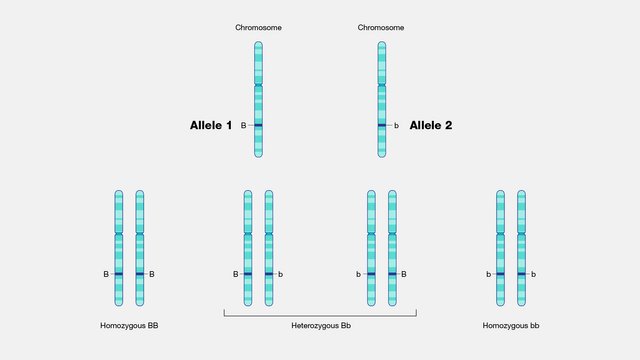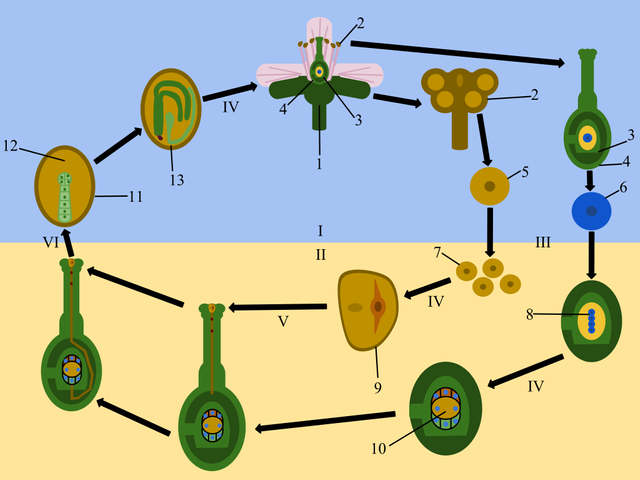Arrays of Agricultural topics 👉Choose-Write-Post#12
Greetings my dear friends of Steemit and Steem-Agro
In continuation of my previous post Basic knowledge inagriculture-29 I'm publicising the next episode of the post.
Genes are segments of DNA strands that code for a specific trait there are hundreds of genes on each chromosome and each cell contains many chromosomes the actual number of chromosomes among cells within a plant or species is constant, but the number will vary among crop species for example each normal cell in a maize plant has 20 chromosomes barley cells contain 14 chromosomes while wheat cells contain 42 chromosomes the entire genetic blueprint of the cell or individual is found in these chromosomes and the genes they contain thus the chromosomes of an individual contain all the genetic information of thousands of genes and the multitude of traits they control in most crop species.
There are two complete sets of chromosomes in each normal cell nucleus one set coming from each parent for example maize has a total of 20 chromosomes or two complete sets of 10 chromosomes each therefore each chromosome has a homolog or in other words another chromosome that is structurally similar to it. Each homolog carries the same genes at the same location in the same order these similar pairs of chromosomes are called homologous chromosomes plants or cells that contain two sets of all chromosomes are referred to as diploid and are designated 2n reproductive cells such as referred to as haploid and are designated one in thus a normal leaf cell of maize would be 2n contained two complete sets of 10 chromosomes each in a total of 20 chromosomes an egg cell of maize would be one and contained one complete set of 10 chromosomes for a total of 10 chromosomes the term genome is used to describe a complete set of chromosomes.
All diploid cells contain two genomes for example in a maize diploid cell both genomes consist of 10 different chromosomes for a total of 20 chromosomes a single chromosome contains many genes the location or place that the gene occupies on the chromosome is called the locus Llosa refers to the locations of several genes because there are homologous chromosomes in the nucleus of a diploid cell there are two copies of each gene or a gene pair for each trait at a particular locus each gene can have different forms of expression called alleles for example a gene controlling flower color can have an allele for red flowers another allele for blue flowers and another for yellow flowers and so on thus a gene may have many alleles but an individual plant has only one pair. Some alleles are dominant over other recessive alleles. Dominant alleles express themselves with or without the presence of a recessive allele recessive alleles are masked in the presence of a dominant allele and are only expressed when the gene pair has both identical recessive alleles.
A plant is made up of billions of cells that originated from an original zygote or fertilized egg cell these cells are called somatic cells and contain the normal chromosome number of the species. The entire chromosome complement for the individual is contained in each cell and must be duplicated and passed on to each newly formed cell this is accomplished through mitosis. Mitosis is the process of cell reproduction where the cell nucleus is divided into two nuclei each terms homozygous and heterozygous refer to the type of alleles present for the gene pair homozygous dominant means the gene pair has identical dominant alleles plant would have white flowers gene pairs that have different alleles. such as Big B little B in this example would be termed heterozygous which implies that the dominant allele would be expressed for that trait in this example blue flowers a plant is made up of billions of cells that originated from an original zygote or fertilized egg cell these cells are called somatic cells and contained the normal chromosome number of the species the entire chromosome complement for the individual is contained in each cell and must be duplicated and passed on to each newly formed cell this is accomplished through mitosis.
Thank you for reading my post.
I would like to invite three fellow Steemians to participate in the contest.
@sabbirakib
@edu-chemist
@chiagoziee


Wow this is a brilliant and informative post and you have explained complex genetic concepts in agriculture so clearly, making it easy to understand the role of chromosomes, genes, and alleles in crop species...wish you all the best 👍.
Thank you for visiting my post and supportive comment.
X Link
https://x.com/Saha_tweet/status/1921051950159679966